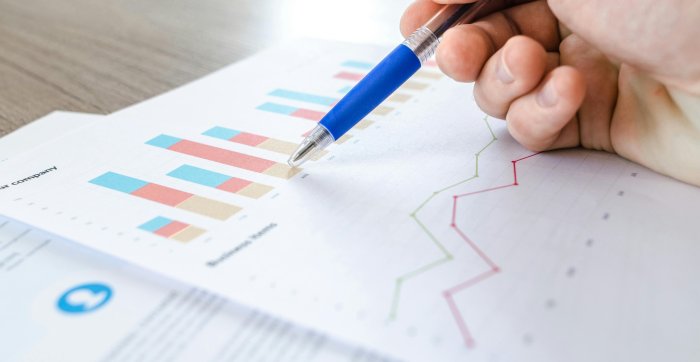
Running a business involves many financial aspects, and one area that often raises questions is how to claim motor vehicle expenses effectively.
If you’re a business owner, one of the perks is the ability to claim tax deductions for expenses related to motor vehicles used in your business operations.
Depending on how your business is structured, there are specific methods for calculating deductions related to motor vehicle expenses.
- If your business operates as a sole trader or partnership with at least one individual partner, the calculation method varies for different types of vehicles. For cars, you can choose between the cents per kilometre method or the logbook method. For all other vehicles, you must use the actual costs method, where you claim expenses based on receipts.
- If you use the logbook or actual costs method, remember that you can only claim the portion of expenses directly related to business use.
- On the other hand, if your business operates through a company or trust, you must use the actual costs method to calculate your deductions, irrespective of the vehicle type.
- Keep in mind that if you use the logbook or actual costs method, you can only claim depreciation or the decline in value for the business-use portion of the motor vehicle. For the current income year (2023–24), the maximum deduction for car depreciation is $68,108 or the vehicle’s cost, whichever is less.
Consult with our KMT tax adviser to ensure you calculate your deductions correctly and maintain proper records.
The logbook method: A simple way to claim tax deductions
Sole traders and those operating in partnerships can claim tax deductions for vehicles used in their businesses using the logbook method. It’s a relatively straightforward approach, but it does require diligent record-keeping of your vehicle-related expenses. The expenses you can claim when using your vehicle for business purposes typically include:
- Fuel and oil
- Repairs and servicing
- Interest on a motor vehicle loan
- Lease payments
- Insurance cover premiums
- Registration
- Depreciation (decline in value)
- Calculating Your Claim with the Logbook Method
To optimise the Logbook Method and ensure accurate expense recording, consider seeking guidance from our KMT tax agent. Follow these steps to determine the amount you can claim:
- Maintain a detailed logbook.
- Calculate your business-use percentage by dividing the distance traveled for business purposes by the total distance and multiplying the result by 100.
- Sum up your total car expenses for the income year.
- Multiply your total car expenses by your business-use percentage.
It’s vital to provide the Australian Tax Office (ATO) with evidence of the expenses you’re claiming. This means keeping records of:
- An electronic or pre-printed logbook.
- Evidence of actual fuel and oil costs or odometer readings used to estimate fuel and oil expenses.
- Evidence of all other car-related costs.
The Crucial Logbook
The logbook is a critical component of this claims method, and it should contain specific information, such as:
- The start and end dates of the logbook period.
- Odometer readings at the beginning and end of the logbook period.
- The total number of kilometres travelled during the logbook period.
- The number of kilometres for each journey, which can be recorded as a single journey if you make two or more trips in a row on the same day.
- Odometer readings at the start and end of each subsequent income year for which your logbook is valid.
- The business-use percentage for the logbook period.
- Make, model, engine capacity, and registration number of the car.
If this year marks the first time you’re using a logbook, remember that it should cover at least 12 continuous weeks during the income year and be representative of your travel patterns throughout the year.
If you plan to use the logbook method for multiple vehicles, make sure that the logbook for each vehicle covers the same timeframe. The 12-week period you choose should be indicative of the business use for all vehicles. This ensures that you maintain consistency and don’t alter your driving patterns to fit the logbooks.
Keep in mind that distinguishing between business and personal use is crucial for accurate claims. Generally, travel between your home and your place of business is considered private use unless you operate a home-based business, and the trip was for business purposes.
Claiming motor vehicle expenses for your business can be a valuable tax-saving strategy, but it requires careful documentation and adherence to ATO guidelines. With the logbook method, you can maximise your deductions while maintaining the integrity of your business and personal expenses. So, get started on keeping that logbook and consult a KMT tax professional for expert guidance on your journey to tax savings.
Luxury Car Tax (LCT)
If your business is registered for GST, and it sells or imports a luxury car that is no more than two years old, you might be liable to pay Luxury Car Tax (LCT). LCT may also apply if your business provides a luxury car to an employee, either as a bonus or as part of a salary package. The classification of a luxury car is based on whether its LCT value exceeds specific thresholds, which for the 2023–24 financial year are:
- Fuel-efficient vehicles: $89,332
- Other vehicles: $76,950
For LCT purposes, a luxury car is defined as a motor vehicle designed to carry a load of less than 2 tonnes and fewer than 9 passengers, except for commercial vehicles not designed primarily for passenger transport. Limousines are categorized as cars, regardless of passenger capacity.
The ATO has provided guidelines to determine a vehicle’s principal purpose for LCT purposes, considering factors such as design modifications that may alter a vehicle’s purpose.
The ATO states that whether a car is a commercial vehicle is determined objectively, based on the vehicle’s design, rather than how it is intended to be used in practice.
The ATO’s compliance approach differentiates between utility vehicles.
If a commercial vehicle with one of the following body types is supplied for an amount exceeding the LCT threshold, the ATO will treat the arrangement as high risk if LCT is not paid:
- Station wagon;
- Off-road passenger wagon;
- Passenger sedan;
- People mover; or
- Sports utility vehicle.
The supply of a truck, cargo or delivery van without LCT being paid is treated as a low-risk arrangement.
Contact KMT accountants now if you think your business might be liable to pay LCT!
Managing business income and expenses
As a business owner, most of the income your business receives is subject to income tax. This total amount is referred to as “assessable income.” When filing your business’ tax return, you’ll need to report this income, including cash income, commissions, capital gains, and more.
However, remember that not all income is assessable, with certain exceptions such as some COVID-19 government payments.
To lower your business’s taxable income, you can claim business tax deductions, provided the expense directly relates to earning your business’s assessable income. If the expense covers both business and private use, you can only claim the business-use portion.
To substantiate your claims, meticulous record-keeping is a must. This includes expenses like motor vehicle and travel expenses, COVID-19-related items, employee superannuation contributions, and payments made to workers, among others.
Don’t underestimate the importance of keeping your financial house in order, as it can save you time and money in the long run.
In conclusion, understanding and effectively managing motor vehicle expenses is crucial for the financial well-being of your business. To navigate these complexities successfully, consult with one of our KMT tax advisers who can provide tailored guidance and help you make informed financial decisions!
About our advisers:
Chrisanthe Lekatis is renowned for her expertise in management accounting, virtual CFO services, and top-tier business advice. She empowers management with tailored strategies for success, streamlining processes to achieve efficient and cost-effective outcomes. Her commitment to building trust and lasting relationships goes beyond professional excellence; it’s a personal ethos. By actively listening and understanding her clients’ businesses and goals, Chrisanthe thrives on collaborative efforts to navigate challenges and collectively achieve their aspirations. Please do not hesitate to reach out if you need assistance.
Michael Fox has been dedicated to the success of his clients, devising comprehensive wealth strategies for both personal and business growth for over 30 years. With extensive expertise in business governance and family business succession, Michael specialises in empowering emerging businesses and family enterprises by fostering renewal, enhancing value and smooth transitions to the next generation. Please do not hesitate to reach out if you need assistance with your business advice.
This is general advice only and does not take into account your financial circumstances, needs and objectives. Before making any decision based on this document, you should assess your own circumstances or professional advice from an accountant at KMT Partners.


